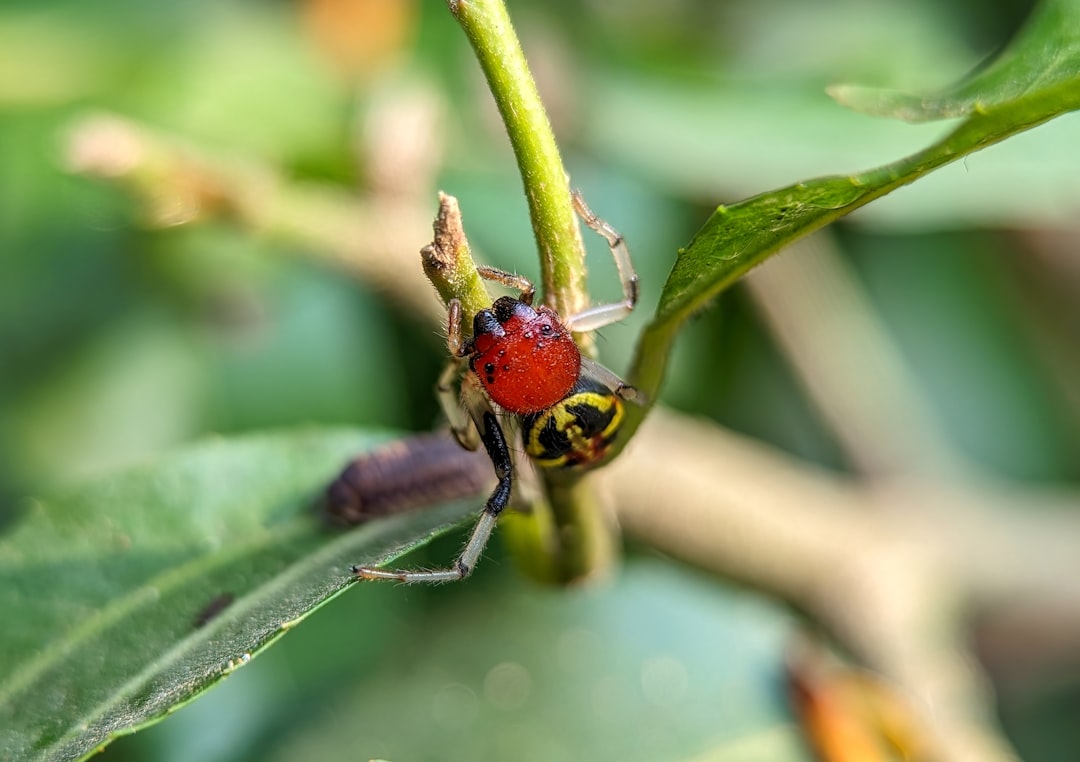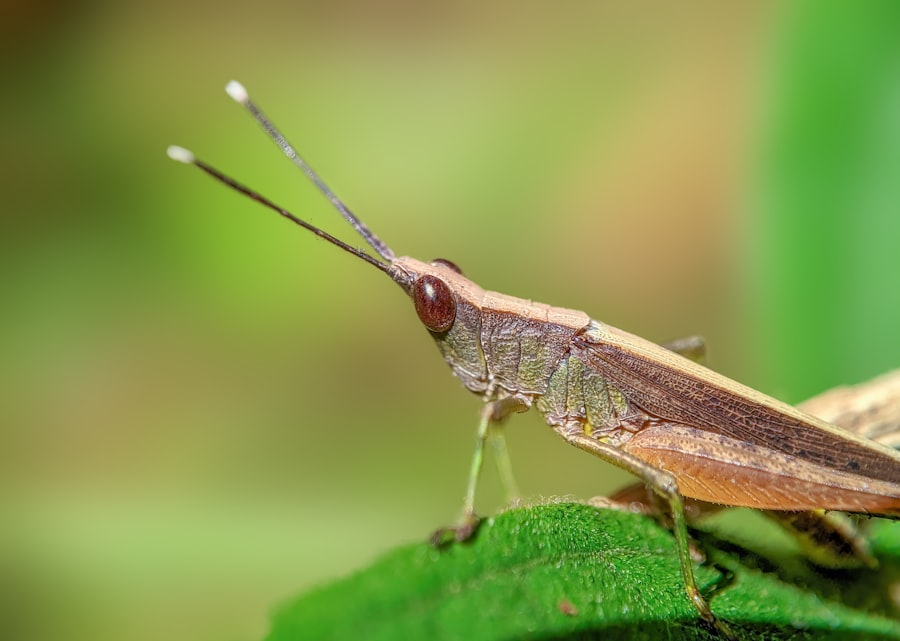Identifying Thrips: A Guide to Their Appearance

Thrips are small, slender insects that belong to the order Thysanoptera. They are of great importance in agriculture and horticulture due to their ability to cause damage to plants and transmit plant viruses. Thrips are found worldwide and can infest a wide range of crops, including fruits, vegetables, and ornamental plants. In this article, we will explore the characteristics of thrips and how to accurately identify them.
Key Takeaways
- Thrips are small insects that can cause significant damage to plants.
- Thrips have a complex life cycle that includes egg, larva, pupa, and adult stages.
- Thrips are characterized by their long, narrow bodies and fringed wings.
- Thrips can be distinguished from other insects by their unique mouthparts and asymmetrical antennae.
- Thrips come in a variety of colors and markings, with some species being more easily identifiable than others.
What are thrips and why are they important?
Thrips are tiny insects, typically measuring only 1-2 millimeters in length. They have elongated bodies with narrow wings fringed with long hairs. Thrips are important in agriculture and horticulture because they can cause significant damage to plants. They feed by piercing the plant tissue and sucking out the sap, which can lead to stunted growth, distorted leaves, and reduced yield. Additionally, thrips are known vectors of plant viruses, which can further impact crop health and productivity.
Understanding the life cycle of thrips
Thrips undergo a complete metamorphosis, meaning they go through four distinct stages: egg, larva, pupa, and adult. The duration of each stage varies depending on the species and environmental conditions. Thrips eggs are usually laid inside plant tissue or in crevices on the plant surface. The larvae hatch from the eggs and go through two instars before entering the pupal stage. The pupa is a non-feeding stage where the insect undergoes internal changes before emerging as an adult. The adult thrips are sexually mature and capable of reproducing.
The physical characteristics of thrips
| Physical Characteristics | Description |
|---|---|
| Size | 1-2 mm in length |
| Color | Varies from yellow to brown or black |
| Wings | Two pairs of narrow, fringed wings |
| Antennae | Long and slender, with several segments |
| Legs | Six legs, with the hind legs longer than the others |
| Mouthparts | Piercing-sucking mouthparts for feeding on plant sap |
Thrips have distinctive physical characteristics that set them apart from other insects. They have elongated bodies with a narrow waist, giving them a slender appearance. Thrips come in a variety of colors, ranging from yellow and brown to black. Some species may have patterns or markings on their bodies, while others may be solid in color. Thrips have two pairs of wings, which are narrow and fringed with long hairs. They also have long, slender antennae that are segmented.
How to distinguish thrips from other insects
Thrips can sometimes be mistaken for other small insects, such as aphids or mites. However, there are a few key differences that can help distinguish thrips from these other pests. Thrips have wings, while aphids and mites do not. Additionally, thrips have long, slender antennae, whereas aphids have shorter antennae and mites have no visible antennae. Thrips also have a distinctive body shape with a narrow waist, whereas aphids and mites have more rounded bodies.
Identifying thrips through their color and markings

Thrips come in a variety of colors and may have different patterns or markings on their bodies. Some common colors include yellow, brown, and black. Some species may have stripes or spots on their wings or bodies, while others may be solid in color. These color and marking variations can help in identifying different species of thrips. It is important to note that the color and markings of thrips can vary depending on factors such as age, sex, and environmental conditions.
The size and shape of thrips
Thrips vary in size and shape depending on the species. They are typically small insects, measuring only 1-2 millimeters in length. However, there can be variations within species as well. Some thrips species may be longer or shorter than the average size. Thrips also have a distinctive shape with a narrow waist, giving them a slender appearance. This characteristic shape can help in distinguishing them from other insects.
Examining thrips under a microscope
Microscopic examination is often necessary for accurate identification of thrips. This is because some species may have subtle differences in physical characteristics that can only be observed under magnification. A microscope allows for a closer look at the body structure, color, and markings of thrips, which can aid in species identification. It is important to have access to a good quality microscope and to have some knowledge of thrips anatomy and identification techniques.
Common species of thrips and their appearance
There are numerous species of thrips, each with its own unique appearance. Some common species include the western flower thrips (Frankliniella occidentalis), onion thrips (Thrips tabaci), and greenhouse thrips (Heliothrips haemorrhoidalis). The western flower thrips is yellowish-brown in color with dark wings and distinctive fringed hairs on its wings. The onion thrips is pale yellow with dark wings and lacks the fringed hairs. The greenhouse thrips is brownish-black with banded wings. These are just a few examples of the many species of thrips that can be found in different regions.
How to identify thrips damage on plants
Thrips damage on plants can manifest in various ways, depending on the crop and severity of infestation. Some common symptoms of thrips damage include silvering or bronzing of leaves, distorted or curled leaves, stunted growth, and deformed flowers or fruits. Thrips feeding can also cause scarring or browning on plant surfaces. It is important to note that these symptoms can also be caused by other factors, so it is essential to accurately identify the presence of thrips before implementing control measures.
Tips for accurate thrips identification
Accurate identification of thrips is crucial for effective plant protection and management. There are several resources available to help with thrips identification, such as field guides and keys. These resources provide detailed descriptions and images of different thrips species, allowing for comparison and identification. Seeking help from experts, such as entomologists or agricultural extension agents, can also be beneficial in accurately identifying thrips. They have the knowledge and experience to properly identify thrips and provide guidance on control strategies.
Thrips are small insects of great importance in agriculture and horticulture due to their ability to cause plant damage and transmit plant viruses. Understanding the physical characteristics and life cycle of thrips is essential for accurate identification. By being able to distinguish thrips from other insects and identifying their color, markings, size, and shape, it becomes easier to identify different species of thrips. Microscopic examination can provide further details for accurate identification. Proper identification of thrips is crucial for implementing effective control measures and protecting plants from damage.
If you’re curious about what thrips look like and want to learn more about these tiny pests, check out this informative article on Lawn World. It provides detailed information on thrips, their appearance, and the damage they can cause to your plants. Discover how to identify and control thrips effectively by visiting https://www.lawnworld.com/thrips-identification-and-control.
FAQs
What are thrips?
Thrips are tiny, slender insects that belong to the order Thysanoptera. They are known for their ability to damage crops and ornamental plants.
What do thrips look like?
Thrips are usually less than 1/20 inch long and are slender and elongated in shape. They have two pairs of wings that are fringed with long hairs. Their bodies are usually yellow, brown, or black in color.
Where can thrips be found?
Thrips can be found in a variety of habitats, including agricultural fields, gardens, and greenhouses. They are also known to infest indoor plants.
What do thrips feed on?
Thrips feed on a variety of plants, including vegetables, fruits, and ornamental plants. They use their mouthparts to pierce the plant tissue and suck out the sap.
How do thrips damage plants?
Thrips damage plants by feeding on them, which can cause stunted growth, distorted leaves, and reduced yields. They can also transmit plant viruses, which can further damage the plant.
How can thrips be controlled?
Thrips can be controlled through a variety of methods, including the use of insecticides, biological control agents, and cultural practices such as removing infested plant material. It is important to identify the species of thrips present in order to choose the most effective control method.



